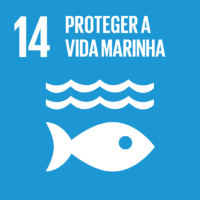Ciência-IUL
Publicações
Descrição Detalhada da Publicação
Feasibility of radar-based detection of floating macroplastics at microwave frequencies
Título Revista
IEEE Transactions on Antennas and Propagation
Ano (publicação definitiva)
2024
Língua
Inglês
País
Estados Unidos da América
Mais Informação
Web of Science®
Esta publicação não está indexada na Web of Science®
Scopus
Google Scholar
Abstract/Resumo
Plastic marine litter is becoming a major environmental concern. Microwaves (MW) have potential for remote detection of floating macroplastics operating from Satellites or Airborne platforms, but very scarce and limited studies exist in the literature evaluating MW radar effectiveness for this purpose. We present first results of a systematic study on MW scattering of floating low-mass macroplastics at 2-20 GHz frequency band using radar techniques. Data was first collected in small-scale measurement campaigns carried out in an indoor facility capable of producing deep sea-like wave patterns, with different floating single-use plastic items. The study reveals that, for these targets, one important scattering contribution arises from the indentation they produce on the water. For the tested conditions, targets, and metrics, it was possible to detect several types of floating plastic targets down to 10 g/m 2 concentration. Detection tended to significantly improve at the X-band, although the detection threshold depends on the combination of the mentioned conditions. Tests were extended also to two small-scale outdoor scenarios with natural wind and capillary waves. Detection of macroplastics was successful in these tested scenarios.
Agradecimentos/Acknowledgements
--
Palavras-chave
Active radar,Backscattering,Macroplastics,Marine plastics,Microwave (MW) sensing,Polarimetry,Polarization,Pollution,Remote sensing,Rough surface,Scattering measurements,Sea scattering
Classificação Fields of Science and Technology
- Engenharia Eletrotécnica, Eletrónica e Informática - Engenharia e Tecnologia
Contribuições para os Objetivos do Desenvolvimento Sustentável das Nações Unidas
Com o objetivo de aumentar a investigação direcionada para o cumprimento dos Objetivos do Desenvolvimento Sustentável para 2030 das Nações Unidas, é disponibilizada no Ciência-IUL a possibilidade de associação, quando aplicável, dos artigos científicos aos Objetivos do Desenvolvimento Sustentável. Estes são os Objetivos do Desenvolvimento Sustentável identificados pelo(s) autor(es) para esta publicação. Para uma informação detalhada dos Objetivos do Desenvolvimento Sustentável, clique aqui.

 English
English



